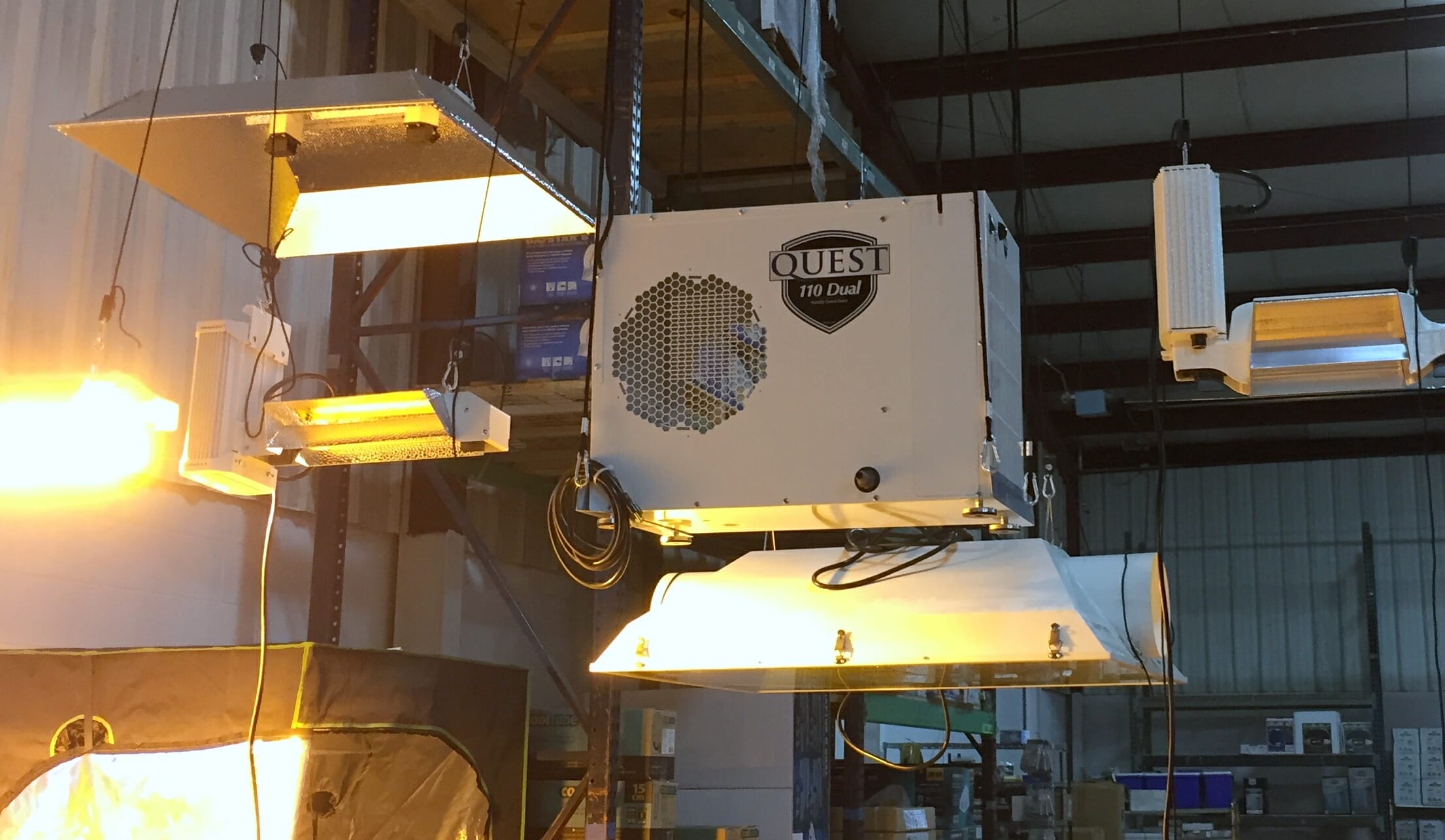For Robust Plant Growth Maintain Proper Humidity Levels

To grow properly, plants need proper humidity, temperature, and light levels. If plants get too much or too little of these elements, the resulting stress can mean lower yields. In this article, we’ll talk about humidity.
Why is proper humidity so important?
Humidity in part determines how much plants will “drink” when they’re watered. Drier air can result in greater fluid/food intake, which may make your plants overdose on nutrients. This is called “nutrient burn,” and becomes apparent when a brown or yellow “burn” appears along the tips of leaves. If the problem is allowed to continue, the entire plant can be damaged. Improperly managed moisture/humidity levels can also lead to fungal infections like powdery mildew, or to bud rot or mold.
What are the proper humidity levels for various stages of plant growth?
- Begin at 70 to 80% RH with seedlings
Seedlings and very young plants don’t have fully developed root systems, and will need to get much of their moisture from the air; hence, the need for greater humidity in the very early growth stages.
- Stay at 50 to 60% through the start of the flowering phase
Keep humidity levels at 50 to 60% RH from the rooted seedling stage through the start of the flowering phase. Higher humidity can help keep salt levels at optimal levels in plants, and can mean better growth.
- Reduce to 40 to 50% at the flowering phase
Once your plants are at the flowering stage, lower the humidity to 40-50% to reduce the chances of fungal contamination.
Lowered humidity for improved flower production?
While some experts believe that anything lower than 40 to 50% RH can unnecessarily stress plants, others believe that going even lower during the later stages of flowering can actually be beneficial. Plants flower more robustly as a result of the drop in moisture, which actually prevents even greater moisture loss in such dry conditions. The improved flower quality also helps discourage fungal infestation.
If this is something you want to try, drop humidity levels down below 40% – some even go to 20% – during the last two to three weeks of flowering.
Published on Apr 23 2015
Last Updated on Feb 27 2024
Categories: Agriculture, Bud Rot, High Plant Yield, Mildew, Powdery Mildew
Tags: grow room humidity, humidity, humidity for cannabis, indoor growing %RH
